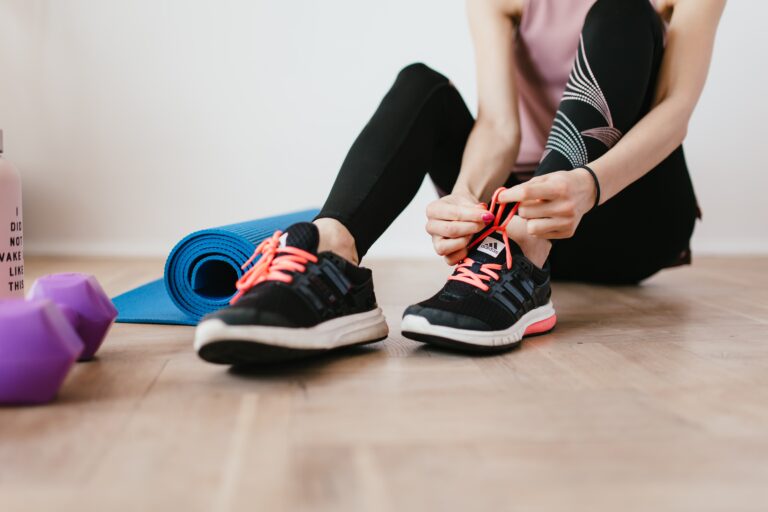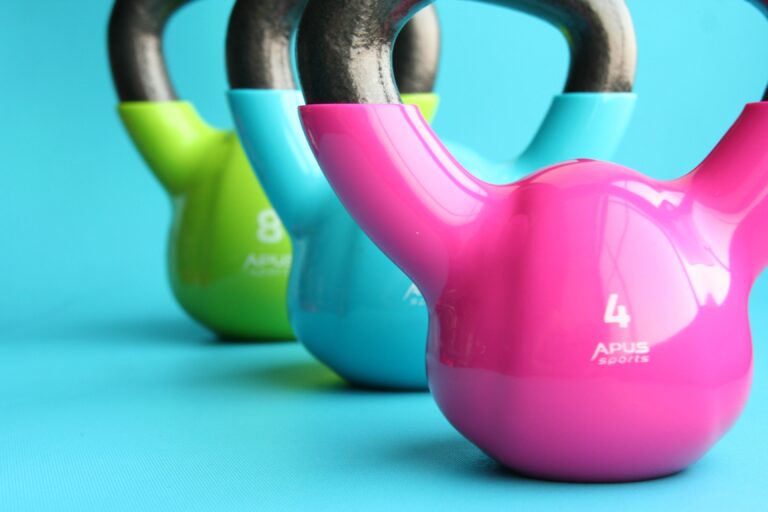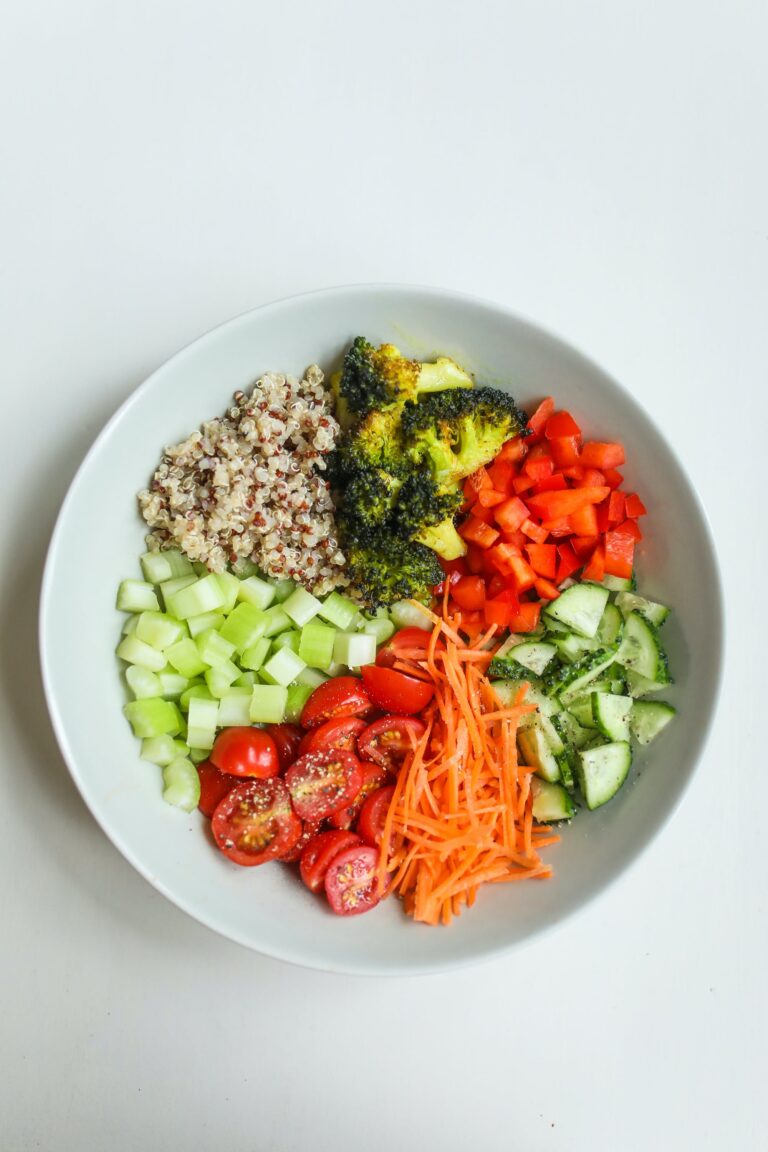5 Home Workouts that will Pump You Up!
“Keeping fit and staying active doesn’t always require a gym membership or specialized equipment. In fact, a great workout can be achieved right in the comfort of your own home. If you’re looking to get your blood pumping and build strength without stepping out, here are five dynamic home workouts that will leave you feeling energized and motivated. These workouts target various muscle groups and cater to different fitness levels, ensuring you can find the perfect routine to pump up your exercise regimen without leaving your doorstep.”
Regular exercise is fundamental to maintaining a healthy lifestyle, impacting both physical and mental well-being. Its significance extends beyond just weight management or muscle development. Here are several key points highlighting the importance of regular exercise:
- Physical Health Benefits: Exercise plays a pivotal role in enhancing cardiovascular health by improving circulation, reducing the risk of heart diseases, and regulating blood pressure and cholesterol levels. It also helps in maintaining a healthy weight, strengthening bones and muscles, and improving overall physical endurance and flexibility.
- Mental Health Improvement: Engaging in regular physical activity is closely linked to better mental health. Exercise stimulates the release of endorphins, neurotransmitters that generate positive feelings and reduce the perception of pain. It can alleviate symptoms of stress, anxiety, and depression, promoting a more balanced emotional state.
- Disease Prevention: Consistent exercise significantly reduces the risk of chronic diseases such as type 2 diabetes, certain cancers, and osteoporosis. It also boosts the immune system, improving the body’s ability to fight off illnesses.
- Enhanced Cognitive Function: Studies suggest that regular physical activity positively impacts cognitive abilities and helps prevent age-related decline in brain function. Exercise improves memory, focus, and overall cognitive function, contributing to better mental sharpness and clarity.
- Improved Sleep Quality: Regular exercise can promote better sleep patterns, aiding in falling asleep faster and achieving deeper, more restorative sleep. This, in turn, contributes to better overall health and mood regulation.
- Boosted Energy Levels: Contrary to the misconception that exercise depletes energy, regular physical activity actually increases stamina and energy levels. It enhances circulation and oxygen supply to tissues, making everyday tasks feel less exhausting.
- Social and Emotional Well-being: Participating in group exercises or team sports fosters social connections, providing opportunities to build relationships and support systems. Additionally, achieving fitness goals can boost self-confidence and self-esteem.
In conclusion, incorporating regular exercise into your routine is an investment in your overall health and well-being. Whether it’s through structured workouts, daily walks, sports activities, or yoga sessions, finding a physical activity you enjoy and can sustain is key to reaping the multitude of benefits that exercise offers.
Why Choose Home Workouts?
Choosing home workouts offers numerous advantages that cater to individual preferences, convenience, and lifestyle. Here are several reasons why opting for home workouts can be beneficial:
- Convenience: Home workouts eliminate the need to commute to a gym or fitness center, saving both time and transportation costs. You can exercise at any time that suits your schedule without being restricted by gym hours.
- Privacy and Comfort: Exercising at home provides a private and comfortable environment, free from the potential discomfort or self-consciousness that some individuals might feel in a public gym setting. You can wear whatever you feel comfortable in and exercise without concerns about judgment from others.
- Flexibility: Home workouts offer flexibility in choosing the type of exercise, duration, and intensity that aligns with your fitness goals. You can personalize routines to suit your preferences, whether it’s high-intensity interval training (HIIT), yoga, strength training, or cardio workouts.
- Cost-Effectiveness: Over time, the cost of a gym membership, commuting expenses, and potentially additional fees for classes or personal trainers can add up. Home workouts eliminate these expenses, as they typically require minimal or no equipment and can be performed with free online resources or apps.
- Accessibility: You have access to your home workout space 24/7, making it convenient to fit exercise into your daily routine, regardless of external factors like weather conditions or travel constraints.
- Customization: Home workouts allow for personalized routines tailored to your specific needs and fitness levels. You can easily modify exercises, progress at your own pace, and adapt workouts as your fitness improves.
- Family and Community Involvement: Working out at home can encourage family or household members to join in, fostering a shared commitment to fitness. It can also create opportunities for online communities, where individuals connect and support each other in their fitness journeys.
- Safety and Hygiene: Especially during times of illness outbreaks or when personal health concerns arise, exercising at home can provide a controlled and hygienic environment, reducing exposure to potential germs or infections.
Ultimately, choosing home workouts offers the flexibility, comfort, and convenience that can be highly appealing to many individuals seeking to incorporate fitness into their lifestyle without the constraints or limitations associated with traditional gym settings.
The 10-Minute Daily Exercise Routine
A 10-minute daily exercise routine can be a highly effective way to maintain consistency in fitness and establish a healthy habit. Here’s a sample 10-minute exercise routine that targets different muscle groups and incorporates both cardio and strength exercises:
Warm-up (2 minutes):
- March in place or jog lightly to increase heart rate and warm up muscles.
- Arm circles, shoulder rolls, and gentle stretches for flexibility.
Circuit (8 minutes): Perform each exercise for 45 seconds, followed by a 15-second rest before moving to the next exercise. Aim to complete two rounds in the 8-minute circuit.
- Bodyweight Squats: Stand with feet shoulder-width apart, bend your knees, and lower your body as if sitting back into an invisible chair. Push through your heels to return to the starting position.
- Push-ups (or Modified Push-ups): Begin in a plank position with hands shoulder-width apart, lower your body by bending elbows, keeping them close to your sides. Push back up to the starting position. Modify by doing knee push-ups or using an elevated surface.
- Mountain Climbers: Start in a plank position, alternate bringing your knees towards your chest in a running motion.
- Plank: Hold a plank position on your forearms or hands, keeping your body in a straight line from head to heels. Engage your core muscles.
- Jumping Jacks: Stand with feet together, then jump while spreading legs and raising arms overhead. Jump back to the starting position and repeat.
- Russian Twists: Sit on the floor, lean back slightly, lift your feet off the ground, and twist your torso from side to side, touching the floor beside your hips.
Cool Down (1 minute):
- Perform slow, controlled stretches focusing on major muscle groups used during the routine, holding each stretch for about 20-30 seconds.
- Deep breathing or meditation for relaxation.
Remember to listen to your body and modify exercises as needed to suit your fitness level. This quick 10-minute routine offers a balanced blend of cardio, strength, and flexibility exercises, providing a great way to kickstart your day or squeeze in a workout during a busy schedule. Adjustments can be made to incorporate different exercises based on personal preferences and fitness goals.
Making the Most Out of Your Home Workouts
Making the most out of your home workouts involves several key strategies to maximize effectiveness, motivation, and results. Here are some tips to optimize your home exercise routine:
- Set Clear Goals: Define specific, achievable goals that you want to accomplish through your home workouts. Whether it’s improving strength, losing weight, increasing flexibility, or enhancing overall fitness, having clear objectives helps in structuring your routine.
- Create a Dedicated Space: Designate a specific area in your home for workouts. Clear the space of any obstacles and ensure it’s well-lit and ventilated. Having a dedicated workout area can psychologically signal your brain that it’s time to focus and exercise.
- Establish a Routine: Schedule your workouts into your daily or weekly routine. Consistency is key, so aim for regularity in timing and duration. Treat your home workouts as non-negotiable appointments to prioritize your health and fitness.
- Variety and Progression: Incorporate various exercises and workout formats to keep your routine engaging and prevent plateaus. Progressively challenge yourself by increasing intensity, adding new movements, or adjusting repetitions and sets.
- Use Technology and Resources: Take advantage of online resources, fitness apps, or workout videos tailored to home exercises. These resources provide guidance, new ideas, and motivation to keep your workouts interesting and effective.
- Invest in Basic Equipment: Consider acquiring basic fitness equipment such as resistance bands, dumbbells, yoga mats, or stability balls. These versatile tools can diversify your workouts and add resistance for strength training.
- Find What You Enjoy: Explore different types of workouts to discover what you enjoy the most. Whether it’s yoga, HIIT, dance workouts, or bodyweight exercises, finding activities you love increases adherence to your routine.
- Stay Accountable: Share your fitness goals with a friend, family member, or join online fitness communities for support and accountability. Tracking progress, using fitness apps, or keeping a workout journal can also help maintain motivation.
- Prioritize Recovery: Allow your body sufficient time to rest and recover between workouts. Adequate sleep, proper nutrition, and incorporating stretching or yoga for flexibility and relaxation are essential components of recovery.
- Stay Flexible and Adapt: Life can be unpredictable, so be flexible with your workout schedule. If you miss a session, don’t be discouraged. Adapt and adjust your plan instead of abandoning it altogether.
By implementing these strategies, you can create a fulfilling and effective home workout routine that aligns with your fitness goals, enhances motivation, and promotes overall well-being.
How to Stay Motivated to Exercise at Home
Staying motivated to exercise at home can sometimes be challenging, but there are several effective strategies to help maintain consistency and enthusiasm in your home workout routine:
- Set Clear and Achievable Goals: Define specific, realistic, and measurable fitness goals. Break them down into smaller milestones to track your progress, which can keep you motivated as you see yourself getting closer to your targets.
- Create a Routine and Stick to It: Establish a regular workout schedule that fits your daily routine. Consistency is crucial for forming a habit. Treat your workout time as an important appointment and prioritize it as you would any other commitment.
- Find Activities You Enjoy: Discover exercises and workout styles that you genuinely like. Whether it’s dance workouts, yoga, strength training, or HIIT, engaging in activities you find enjoyable increases the likelihood of sticking with your routine.
- Mix Up Your Workouts: Avoid monotony by varying your workouts. Incorporate different exercises, change routines, or try new fitness classes or online videos to keep things fresh and exciting.
- Set Up an Inviting Workout Space: Create an environment that motivates you to exercise. Designate a clean, well-lit, and organized space in your home for workouts. Add motivational quotes, posters, or inspiring visuals to uplift your mood.
- Use Technology and Apps: Take advantage of fitness apps, online workout videos, or virtual classes that provide structure, guidance, and motivation. These resources offer a wide variety of exercises and instructors to keep you engaged.
- Workout with a Partner or Join Online Communities: Find a workout buddy or join online fitness communities or social media groups. Sharing experiences, progress, and challenges with others can provide support, encouragement, and accountability.
- Track Your Progress: Keep a workout journal, use fitness apps, or take regular measurements to track your progress. Seeing improvements in strength, endurance, or flexibility can boost motivation and reinforce your efforts.
- Reward Yourself: Celebrate milestones or achievements with non-food-related rewards. Treat yourself to something enjoyable after reaching a fitness goal, such as buying new workout gear or taking time for self-care.
- Focus on Benefits Beyond Physical Appearance: Remember that exercise offers numerous benefits beyond physical appearance, including improved mood, better sleep, increased energy levels, and reduced stress. Focus on these positive outcomes to stay motivated.
- Be Kind to Yourself: Embrace occasional setbacks or days when motivation is low. Avoid self-criticism and practice self-compassion. Instead of dwelling on missed workouts, focus on restarting and moving forward.
By implementing these strategies and finding what works best for you, you can maintain motivation and consistency in your home workout routine, leading to long-term fitness success and overall well-being.
Safety Measures While Exercising at Home
Exercising at home offers convenience and flexibility, but it’s essential to prioritize safety to prevent injuries and ensure a productive workout experience. Here are some crucial safety measures to consider while exercising at home:
- Consult with a Healthcare Professional: Before starting any new exercise regimen, especially if you have underlying health conditions or haven’t been active, consult with a healthcare professional or a fitness expert to ensure the chosen exercises are suitable for you.
- Warm-up and Cool Down: Always begin your workout with a proper warm-up to prepare your muscles and joints for exercise. Likewise, end your session with a cooldown to gradually lower your heart rate and prevent muscle soreness.
- Use Proper Form and Technique: Correct form is crucial for preventing injuries and maximizing the effectiveness of exercises. If you’re unsure about the proper form for a particular exercise, seek guidance from fitness professionals through videos, tutorials, or apps.
- Start Slowly and Progress Gradually: Avoid pushing yourself too hard, especially if you’re a beginner or returning to exercise after a break. Start with lighter weights or lower intensity and gradually increase intensity, duration, or weights over time as your strength and endurance improve.
- Stay Hydrated: Drink water before, during, and after your workouts to stay hydrated. Even at home, it’s important to replenish fluids lost through sweat.
- Choose Appropriate Attire and Footwear: Wear comfortable, breathable clothing that allows for unrestricted movement. Ensure you have proper footwear that provides support and stability for the type of exercise you’re doing.
- Clear Exercise Space: Create a safe workout area by removing any obstacles, ensuring adequate space around you to perform exercises without interference. Avoid exercising near furniture or sharp objects that could cause injury.
- Use Safe and Stable Equipment: If using fitness equipment, ensure it’s in good condition and set up correctly. Follow the manufacturer’s instructions for assembly and use. For bodyweight exercises, use stable surfaces and mats to prevent slips and falls.
- Listen to Your Body: Pay attention to how your body feels during exercise. If you experience pain, dizziness, or shortness of breath beyond normal exertion, stop exercising and seek medical advice if needed.
- Be Mindful of Overexertion: Pushing yourself too hard or exercising excessively can lead to overuse injuries or burnout. Allow for adequate rest days between workouts to allow your body to recover.
- Have Emergency Contacts Available: Keep your phone nearby or inform someone in your household about your workout routine in case of emergencies.
By incorporating these safety measures into your home workout routine, you can minimize the risk of injury and create a safer environment to achieve your fitness goals effectively.
Conclusion
In conclusion, exercising at home offers an array of benefits, from convenience and flexibility to personalized routines tailored to individual preferences. It’s a practical and accessible way to prioritize fitness, especially when gym access or time constraints are factors.
By embracing home workouts, individuals can foster a consistent exercise habit that contributes to improved physical health, mental well-being, and overall quality of life. Whether it’s through bodyweight exercises, yoga, online workout videos, or utilizing basic equipment, the options for home fitness are diverse and adaptable to various fitness levels and goals.
Safety measures such as proper warm-ups, using correct form, gradual progression, and listening to one’s body are crucial aspects to ensure injury prevention and a productive workout experience.
Additionally, staying motivated through goal-setting, varying routines, seeking enjoyment in workouts, and leveraging technology or community support can sustain long-term commitment and enthusiasm for home exercise.
Ultimately, home workouts provide a valuable opportunity to prioritize health, stay active, and achieve fitness goals within the comfort and convenience of one’s own space. By incorporating safety precautions, finding enjoyment in various exercises, and maintaining consistency, individuals can harness the power of home workouts to enhance their well-being and lead a healthier lifestyle.








